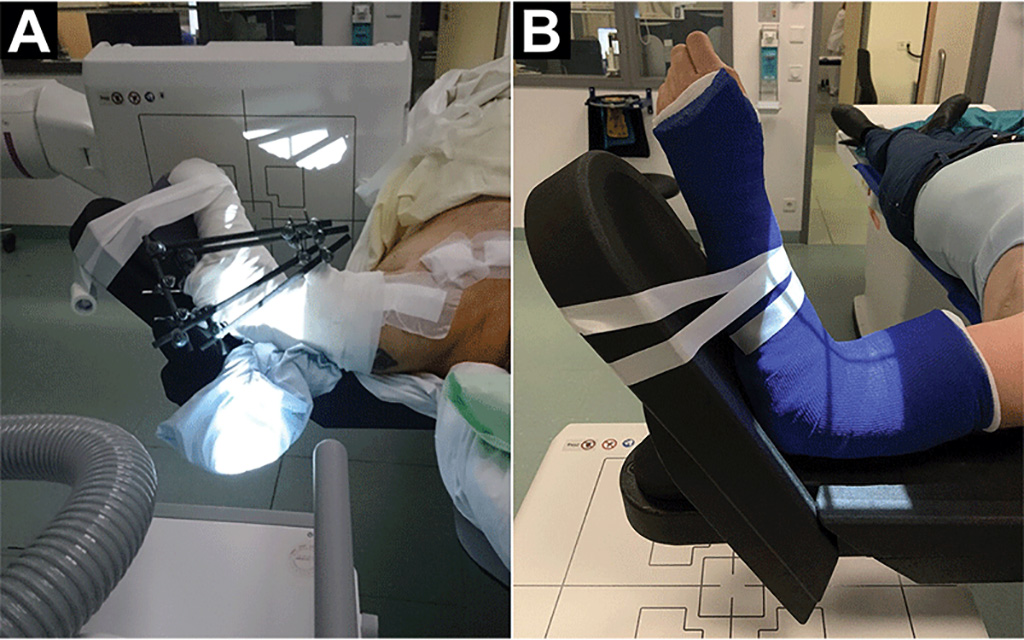Gantry-Free Cone-Beam CT Offers More Flexibility for Elbow Imaging
Posted on 15 Dec 2023
Elbow injuries are frequently seen in emergency rooms, yet capturing high-quality images of such injuries can be challenging. Traditional CT systems typically have a gantry diameter of 70 to 80 cm, requiring patients to adopt a prone position with the injured arm extended, often referred to as a "superman" pose. This position, with the injured arm either beside the body or on the abdomen, can affect image quality as well as require increased radiation doses. An effective alternative has emerged in the form of gantry-free cone-beam CT (CBCT) combined with large flat-panel detectors. This approach has been shown to significantly reduce the radiation dose compared to traditional gantry-based multidetector CT (MDCT), without compromising image quality. Researchers recently undertook a study to evaluate the effectiveness of gantry-free CBCT compared to two-dimensional radiography in diagnosing acute elbow trauma in both adults and children.
In the study, conducted at University Hospital Würzburg (Würzburg, Germany), researchers used a high-resolution CBCT scanning mode based on a radiographic system equipped with two telescopic arms mounted on ceiling rails. These arms carry the X-ray tube and a large flat panel detector, respectively. Their coordinated movement along set trajectories facilitates the collection of three-dimensional projection data. The retrospective study revealed that, in 23 patients who had difficulty being positioned for gantry-based CT, elbow fractures were more sensitively diagnosed using gantry-free CBCT than with traditional two-dimensional radiography.

The CBCT system effectively overcomes the positioning challenges of gantry-based CT and yields remarkably high-quality images. Moreover, gantry-free CBCT offers enhanced dose efficiency due to the unique acquisition geometry of its twin robotic arms. Although the CBCT's acquisition time of 14 seconds is longer than the five seconds typical of gantry CT, leading to concerns about potential motion artifacts and reduced image quality, this issue was mitigated by allowing scanning of the elbow in a comfortable, flexed 90° position, minimizing patient movement. In related research, it was also demonstrated that imaging the appendicular skeleton with the gantry-free CBCT system is viable even in the presence of metal implants that can potentially impair image quality.
“Cross-sectional elbow imaging in the context of trauma can be quite challenging,” said Andreas Kunz, MD, a radiologist at the University Hospital Würzburg. “Not only did this CBCT system eliminate the positioning challenges associated with gantry-based CT, it also provided remarkably high-quality images.”
“The investigated gantry-free cone-beam CT promises to alleviate the most common challenges to imaging the appendicular skeleton without compromising image quality, radiation dose or patient comfort,” Dr. Kunz added.
Related Links:
University Hospital Würzburg














